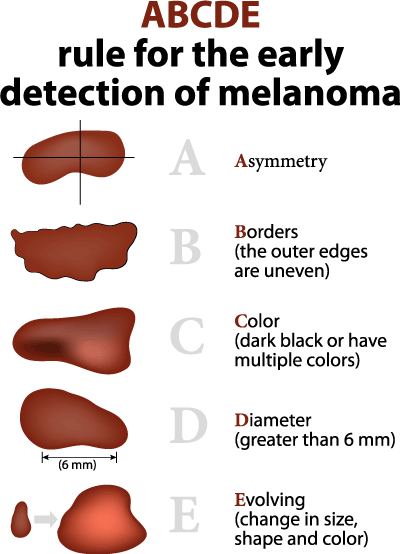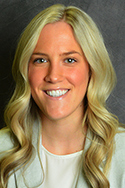Shining a Light on Skin Cancer in Rural Minnesota
by Brailyn Weber
December 2023
Looking at statistics over the past three decades, Minnesota's health experts have discovered that the occurrence of one type of skin cancer in particular, melanoma, has tripled. Because melanoma is a cancer that has the ability to spread rapidly to the lungs, liver, and brain, learning what causes it and how to prevent it might help save the life of an Otter Tail County resident.
The good news is that scientists have a clear understanding of what causes melanoma and other skin cancers. Around 90% of skin cancers can be attributed to the ultraviolet (UV) radiation emitted by the sun. Further research has also shown that people who live in rural areas have a higher rate of skin cancer compared to those who live in urban areas, likely because of more outdoor yard work, farm work, and a higher number of outdoor occupations. Researchers also found that rural residents used less sunscreen and infrequently used sun protective clothing compared to urban residents. Coupled together, these last two factors – more sun exposure and less sun protection – create a perfect storm that cultivates an increased risk for skin cancer.
For rural Minnesotans, what can be done to decrease the risk of developing skin cancer? Put simply, the best way is sun protection. A great way to do this is to use sunscreen on a regular basis. The American Academy of Dermatologists recommends applying a sunscreen with the label “SPF 30” or even a higher number every two hours while outdoors. Because UV radiation can penetrate through clouds, sunscreen is needed even on cloudy days. In addition to the use of sunscreen, dermatologists also suggest seeking shade between 10:00 am and 2:00 pm when the sun's rays are the strongest, along with wearing sun protective clothing such as long-sleeved shirts and wide-brimmed hats. A final recommendation is to avoid the use of tanning beds as they emit very high levels of UV radiation.
 Perhaps just as important as what causes skin cancer and
how to prevent it is knowing what it looks like in its
early stages. Physicians recommend that patients keep an
eye out for suspicious new skin spots or patches by
performing skin self-exams in the shower or in front of a
mirror every few months. During these exams, patients
should use the memory trick “ABCDE”
to catch any odd-looking new skin spots.
Perhaps just as important as what causes skin cancer and
how to prevent it is knowing what it looks like in its
early stages. Physicians recommend that patients keep an
eye out for suspicious new skin spots or patches by
performing skin self-exams in the shower or in front of a
mirror every few months. During these exams, patients
should use the memory trick “ABCDE”
to catch any odd-looking new skin spots.
To start, “A” is for asymmetry, which means a uniquely shaped skin spot that is not perfectly round. Next, “B” is for border. If the spot has a jagged or smudged edge, that can be a sign of early skin cancer. “C” is for color. It's worrisome if a spot has more than one or two colors. For “D”, which stands for diameter, any spot that's bigger than the size of a pencil eraser should be considered suspicious. Lastly, “E” stands for evolving or changing. Any change in the size, shape, or color of a skin spot might be an early warning of a cancer.
A single “yes” to any of the ABCDE criteria should trigger a reason to visit with a primary care provider or a skin specialist, referred to as a dermatologist. Additionally, because skin cancer has the potential to grow in places that are hard to see, skin experts also recommend that patients undergo yearly preventative skin exams. This exam is usually a part of a routine wellness exam or yearly physical.
Although skin cancer and melanoma rates have been on the rise for the last thirty years, each rural Minnesotan has the power to prevent it: Apply an SPF 30 or higher sunscreen, seek shade at times of peak sun intensity, wear sun protective clothing, and don't forget periodic self-skin checks.
About the Author
 Brailyn Weber is a third-year medical student at
the University of North Dakota School of Medicine &
Health Sciences. As a participant in patient care
experiences offered in Perham, Minnesota, Brailyn chose
to participate in the Targeted Rural Health Education
program, or TRHE. The program focuses on teaching student
doctors the importance of rural newspapers as a way to
share health information with rural community members.
The information is not for diagnosis or treatment and
should not be used in place of previous medical advice
provided by a licensed practitioner.
Brailyn Weber is a third-year medical student at
the University of North Dakota School of Medicine &
Health Sciences. As a participant in patient care
experiences offered in Perham, Minnesota, Brailyn chose
to participate in the Targeted Rural Health Education
program, or TRHE. The program focuses on teaching student
doctors the importance of rural newspapers as a way to
share health information with rural community members.
The information is not for diagnosis or treatment and
should not be used in place of previous medical advice
provided by a licensed practitioner.
